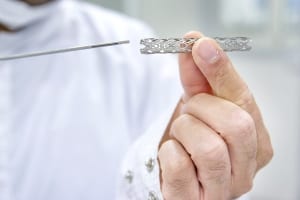Herzliya Medical Center
Tel: +972-9-959-4888
09:00-18:00
 Coronary Angioplasty is a medical procedure performed following or due to a diagnostic Diagnostic Cardiac Catheterization, in order to open the stenosis or occlusion in the coronary arteries. During a cardiac infarction (“heart attack”), Coronary Angioplasty will be performed as an emergency procedure.
Coronary Angioplasty is a medical procedure performed following or due to a diagnostic Diagnostic Cardiac Catheterization, in order to open the stenosis or occlusion in the coronary arteries. During a cardiac infarction (“heart attack”), Coronary Angioplasty will be performed as an emergency procedure.
Similar to diagnostic catheterization, Coronary Angioplasty is also performed under localized anesthesia by inserting a catheter to the femoral artery or the radial artery, and from there to the coronary arteries. The outline of the catheterization is monitored carefully via contrast agent, with x-ray guidance.
Today, if stenosis or occlusion in the coronary arteries is diagnosed, the most common means to dilate them is via balloon and stent, or supportive coil, insertion. According to the nature of the stenosis, its location, severity and the patient’s general medical condition, the operating radiologist will decide if these actions can be done as a follow-up procedure of the diagnostic catheterization or if they should be done as a separate procedure, after receiving the results of the diagnostic catheterization.
For most patients, dilatation via balloon, with or without stent insertion, will significantly improve functioning and mitigate the effects leading to doing the catheterization, and mostly to significant relieve in angina pectoris. However, among 10-30% of patients, there might be repeat stenosis of the treated artery. This repeat stenosis is caused by hypertrophy of blood vessels parietal cells, and a localized scar following the medical procedure. Today, in accordance with the cardiologist’s considerations, unique stents coated with medicine can be used to significantly reduce the risk of hypertrophy. The use of these stents reduces the risk of repeat stenosis.
In certain cases, there might be a medical need for more extensive cardiac surgery, following the catheterization. In these cases, the patient will be moved to the operating room to receive the optimal continued care for his condition.